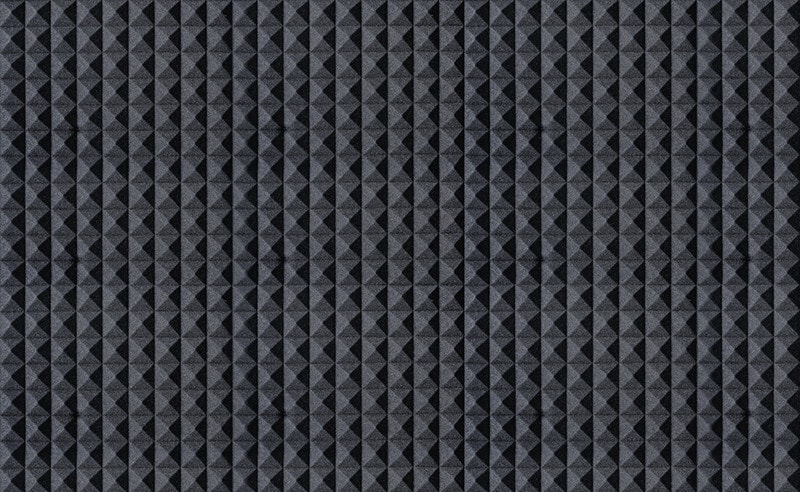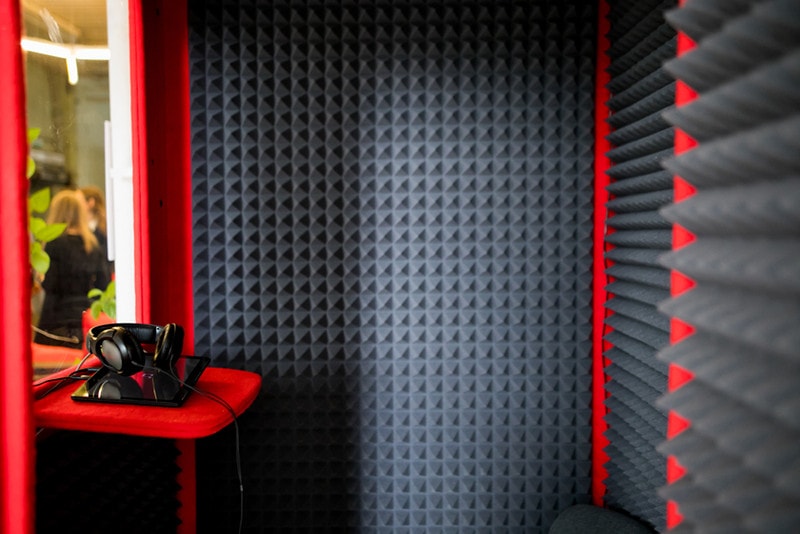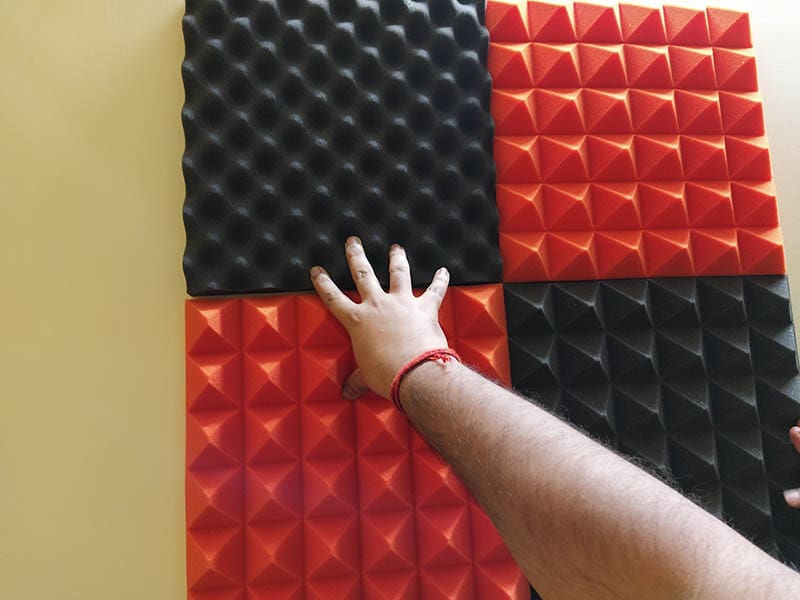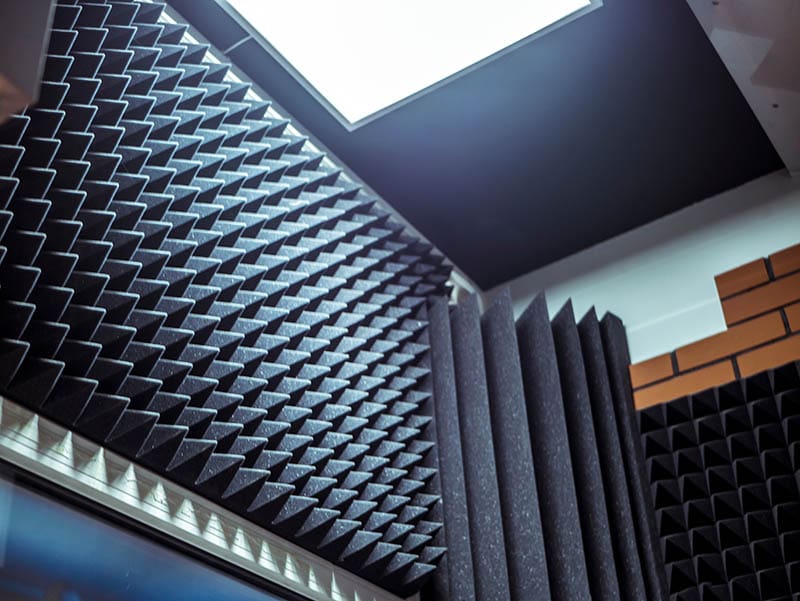Do Soundproof Panels Actually Work? Facts to Considere & FAQ
-

- Last updated:

Are you tired of hearing outside noises when trying to enjoy a movie or just relax in silence? Acoustic panels will help you with that. They keep echoes to a minimum, successfully taming the highs and the lows. On top of that, they come at a reasonable price. Low-thickness panels are not that great at controlling low frequencies, though.
So, how does an acoustic panel affect the sound quality in a room? How do you place it properly? Should you only cover 15% of the room or 30%? If you have been asking these questions and having a hard time finding the answers, this guide is for you! Read on, and you’ll learn your way around soundproof panels in no time!

What Is a Soundproof Panel? Breaking It Down
As the name suggests, an acoustic panel is a sound-absorbing board specifically designed to improve the sound quality in an enclosed space. When positioned strategically, soundproof panels can absorb most of the residual sound that travels through the room. Now, when there’s no insulation, sound waves keep “ricocheting” from the walls, the floor, and the ceiling.
At one moment, they clash, which results in a muddy, cluttered sound. Say, if you’re watching a movie in your home theater, and there isn’t a single acoustic panel to handle the echoes, you won’t be able to hear anything. This is a big problem for recording and mixing studios: in a less-than-ideal acoustic environment, instead of reducing certain frequencies, engineers end up boosting them and vice versa, messing things up.

How Effective Are They? Are They Worth It?
The short answer is yes, soundproof panels are worth the investment. The vast majority of panels are decent at controlling the mid and high frequencies. However, when it comes to the low-frequency range, the results won’t be quite as satisfying (unless the panels are very thick). That’s why most theaters, venues, or music studios have lots of “boom” in the audio.
If you have the budget for that, consider investing in a bass trap. It will absorb low-frequency sound waves and deal with the low-end (more on that further down this guide). Going back to acoustic panels, they are capable of absorbing up to 90–100% of the echoes in the room (given you’ve placed them correctly), ensuring higher acoustic quality.
What Are These Panels Made Of?
Fabric and insulating foam—that’s what the vast majority of soundproofing panels are made of. The foam does the heavy lifting, while the fabric is there to make the panel look more appealing. In professional studios, it’s rather common to see “naked” panels with no fabric. Different brands use different materials, of course, and mix them differently, too.
Denim, fiberglass, and wool are some of the go-to materials for sound insulation. In addition, these panels come in different shapes and sizes. You might think engineers do this for the sake of design, but that’s not true. With noise-dampening products, the shape plays a big role. Let’s talk about that next.

Does the Shape Matter?
Take a quick look at some studio-ready soundproof panels—you’ll see that most of them are square or rectangular. But, they have a cone, pyramidal, or, scientifically speaking, “jagged triangular shape” at the top. What’s the point of that? The idea is really simple yet effective: the more geometrical shapes in the room, the more bouncing sound waves you’ll have.
And, every time standing waves are reflected, they slowly fade away. Egg-shaped cartons will also work. That’s why many DIY, low-budget studios have egg boxes glued to the walls. The pyramidal and egg carton shapes ensure echoes bounce at least twice before reaching your ears.
It All Comes Down to the Thickness
When navigating through various acoustic panels, always check the thickness. While the material and the shape are most certainly important, it’s the thickness that defines how much sound insulation you’ll get. Here’s a quick look at the most common options available on the market:
- 1-inch thick. These are the most basic soundproof panels. They’re affordable yet do a decent job of handling the mids and the highs. So, if you’re looking for an entry-level solution to your acoustic problems, 1-inch panels will be a great investment. They can absorb most of the reflections and improve the sound quality.
- 2-inch thick. Twice as thick as the cheapest units, 2-inch panels are much better at absorbing echoes. They are the go-to choice for DIY audio enthusiasts that want to soundproof their home theaters, studios, and makeshift vocal booths. Even some mid-range professional studios use these.
- 3-inch thick. If you’re not happy with how the thin panels are controlling the low frequencies, consider switching to three inches. Flexible, versatile, and with the ability to absorb the entire frequency range (20 Hz–20 kHz), these panels can make a rather big impact.
- 4-inch thick. This right here is the “king of the jungle”. With a set of 4-inch acoustic panels, you’ll get to enjoy above-average sound wave absorbing/trapping power. Thanks to the extra inch, the bass frequencies won’t be that big of a problem, either. The price tag can be a bit steep, though.
- Bass traps. As mentioned, bass trapping panels only have one, very specific purpose: to control the low-end. All you have to do is place them in the corners. Bass traps are necessary when working with pro-level bass amplifiers or studio monitors. They don’t do much against the highs and the midrange, however.

Proper Placement: Step-By-Step Guide
The rule of thumb here is to put the panels in the areas where you expect most of the sound waves to “hit”. That way, they’ll be largely absorbed by those panels before bouncing back and reaching your ears. In a classic scenario, two acoustic panels are placed right behind the listening position, or, rather, the front speakers.
And if you have a surround system setup (with two speakers placed behind you), put a pair of panels on the front wall. Bass traps are easier to work with. No need to be surgical here: just put it in one of the corners, and it will instantly trap the lows. To tame echoes that go up, glue a panel or two to the ceiling.
How Much Do Acoustic Panels Cost?
The good news is—there’s no shortage of such panels on the market. And, thanks to heated competition the prices are more than affordable. On average, you’ll have to pay $6-8 per square foot of fabric-wrapped panel, which is a fair price. The cost will depend on the material, size, and, of course, thickness of the panels. The larger and thicker they are, the more you’ll have to pay.
Now, acoustic panels aren’t at all complicated. If you know your way around some basic tools, it shouldn’t be hard to build one yourself. Yes, it will take time to find the right type of foam, order it, cut it, and put it inside of a frame. But this way, you’ll get to save $5-6 per square foot. Remember: most manufacturers drive the prices up purely because of the brand, not some premium features.

How Much of the Room Should Be Covered?
If you just had a couple of soundproof panels installed but can’t seem to tell the difference, don’t panic just yet. Most likely, you simply don’t have enough. On average, for acoustic panels (or any other form of sound absorption) to work, you need to cover at least 15% of the room (15–30% is the golden middle for most spaces).
To truly enjoy a home theater, consider treating up to 50% of the walls and maybe the ceiling as well. Finally, in recording and mixing studios, acoustic panels cover 50–80% of the surface, or even more. So, how do you know exactly how many panels you need? A bedroom or a living room will make do with 15%. If it’s a more complicated setting, consider paying a professional.

How Long Do Acoustic Panels Last?
On average, expect them to serve for five years—that’s the industry standard for soundproof panels. Premium-quality panels, in turn, will last for up to 7–10 years if you take proper care of them. Do keep in mind, however, that after seven years, it’s generally not recommended to keep using acoustic foam (in any form). Why is that, though? The foam will start releasing particles into the atmosphere.
As a result, it will gradually lose its ability to absorb and disperse sound waves. It might also damage (or, at least, clog) the ventilation system. More importantly, while acoustic foam dust isn’t classified as toxic to humans, it will hurt your eyes and make it harder to breathe when inhaled. So, yes, acoustic panels don’t last forever, no matter the brand. Keep that in mind if you have a respiratory condition.

Conclusion
Acoustic panels are the cheapest, most straightforward, and widely available remedy against standing waves. You don’t need a degree in sound engineering to use them in your basement, studio, or home theater. Depending on how well-placed they are, these panels are capable of controlling the entire frequency range, including the highs, the mids, and even the low-end.
This is especially true if you combine them with bass traps. Now, before you pay hard-earned money for soundproof panels, you need to consider the thickness, material quality, and shape. Insulating foam is the industry standard right now, while triangle shapes are great at trapping bouncing echoes. As for the thickness, to achieve the best results, get a set of 4-inch panels. That’s pretty much it!
- Science Learning Hub – sound-wave interference
- Acoustical Solutions – What Are Bass Traps?
- SoundproofCow – What Is Acoustic Foam Made Out Of?
- SoundAssured – Which Acoustic Foam Shape Is Best?
- NWNoiseControl – 3 Myths About Acoustic Foam
- BehindTheMixer – HOW TO STOP STANDING WAVES
- How Much Acoustic Sound Treatment Do I Need?
- AcousticFreq – How to Build Your Own Acoustic Panels
- HomeTheaterDIY – How Effective are Acoustic Panels
Featured Image Credit: Khuroshvili Ilya, Shutterstock
Contents
